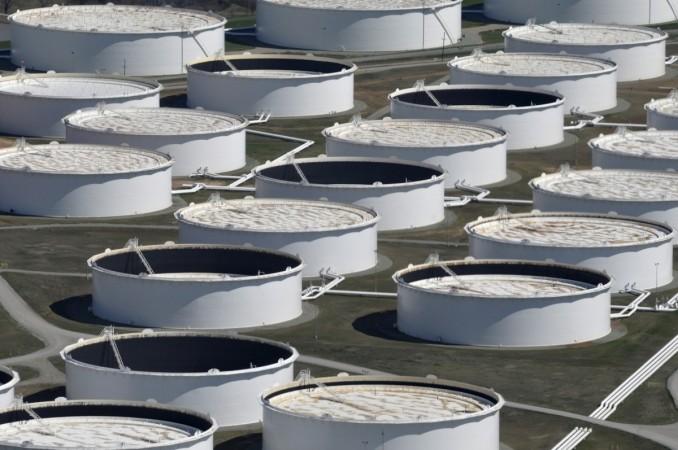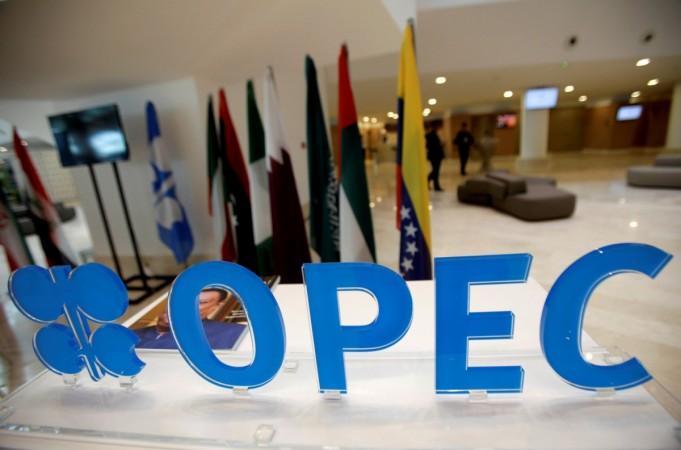There were some unusual dynamics reported in the oil market yesterday that led to a huge drop in crude oil prices to hit the lowest ever below $0 for the first time ever in history, to minus $37.63 a barrel. The crude oil prices crashed 300% from $17.85 a barrel to hit a bottom-low of minus $37.63 on Monday.

Since most oil contracts roll over each month, they do not normally crash to such record lows. This record low-close in the May contract came because of thin trading volume for West Texas Intermediate (WTI) crude, ahead of its expiration on Tuesday. However, the June contract for WTI crude oil only dropped by 10% to $22 a barrel.
WTI is the benchmark crude for North America, and Brent crude is the benchmark for crude oil derived from African, European, and Middle Eastern markets, which fell by just 5% to $26.50 per barrel. The Brent crude pricing dictates the value of roughly two-thirds of the world's crude oil production.
Currently, the prices can run amok in the crisis scenario. Since wholesale gasoline futures and oil futures are linked, they do not necessarily determine the price of crude oil on any given day. Also, wholesale gasoline futures do not fully determine the final price of oil sold at the gas station. Most oil contracts determine the price, albeit with future prices factored into it.
What exactly happened on Monday? Why crude oil prices witnessed a sharp drop?
On Monday, the crude oil market saw sellers paying buyers to take the stuff off their hands. With the pandemic bringing the global economy to a standstill, there is a lot of unused oil sloshing around, that US energy companies are running out of room to store the same. Considering there is no room to store excess oil supply, no one seems to be interested in a crude contract that will soon come due.
With oil traders having no access to storage facilities for the excess supply and global producers continuing to pump, an unexpected deal was entered by OPEC and its allied members last week to curb oil supply - a move that came in too late in the face of a one-third decline in global demand.
Despite weak headline prices, retail investors continue to plough money back into oil futures. The U.S. Oil Fund ETF saw a record $552 million on Friday, to take the total inflows last week to $1.6 billion. With the news of crude oil price collapse reverberating in the entire industry, the crude oil explorers in the US have shut down 13% of their drilling fleet last week, to help curb production levels. But this curb is not happening at a fast pace as anticipated, to avoid storage concerns from the investor community.
Traders are concerned about the build-up of oil inventory, which is not quite easy to fix in the near term, resulting in a lot of distressed cargoes on the market. The traders and buyers want to get rid of the excess oil, but the global demand for oil has crashed since the coronavirus outbreak has restricted people movements and imposed trading barriers. Plus the transportation cost of shipping oil has gone up 3 times since March 2020. According to a news report, "India's Strategic Petroleum Reserve (SPR) is only 37 million barrels that is equivalent to 13 to 16 days usage at the current rate of consumption."
Once the wholesale gasoline cost is factored there are other factors that go into, before arriving at the final price the consumers will pay at the gas station to get their tanks refilled with diesel or petrol. Crude is anyways not the best predictive indicator of final retail prices sold at gas stations. Instead, wholesale gasoline prices could be a determinant to factor in the prices at which oil will be sold to end-consumers.
Why did petrol and diesel prices in India not decline, despite negative crude-oil pricing?
With crude oil prices dropping to a historic low by 305 per cent, it stood at a negative $37.63 a barrel on April 20. India is a net importer of oil from the Organisation of the Petroleum Exporting Countries (OPEC) block, which means lower prices in international markets should also bring down domestic oil prices of petrol and diesel in India. But this effect was not proportional and immediate, why? This is because Asian currencies including the rupee are trading weak against the US dollar. Also considering the fact that India will pay for the imported oil purchase from OPEC in dollars, the rupee-dollar difference is the reason for offset gains from lower oil prices.

Considering the lack of storage provisions in Cushing (Oklahoma), and excess oil supply, no more oil can be bought further. Plus the demand for crude oil has fallen in the wake of the pandemic, and hence the prices of WTI crude has witnessed a sharp drop. However, India largely imports Brent crude from the North Sea near Norway. In comparison to WTI, Brent prices are more stable in the current situation.
The oil prices are regulated by the Indian government to off-set fiscal deficit against subsidies given to state-run oil companies. The government taxes are applicable over the base price of oil, which increases the retail cost for consumers. However, with the global economy at a standstill now, the government is depending on lower oil prices to make up for the difference. So, even if the price of crude oil goes below $0 or negative, the benefit will not be extended to customers in whole or in part, as companies and gas traders are looking at reaping profits by selling oil at the same price.
Plus, there is an additional processing cost to include transportation, taxes and distribution charges which add to the retail cost before oil sales. Hence, Indian consumers will see no significant change in prices of diesel and petrol in the coming months, despite crude-oil prices in the US at an all-time low. In times of economic upheaval, the market will witness further dislocations with fuel supply outweighing fuel demand in the near future. As per a news report, "The worldwide oil consumption is roughly 100 million barrels a day, but consumption fell by 30 per cent globally, or about 30 million BPD, beginning in early March."
What does negative crude oil pricing mean for Indian consumers?
Negative crude oil pricing for investors could mean, those who are holding the contracts are unwilling to buy excess oil supply and not ready to incur huge storage costs in an environment of decreasing consumer demand.

Further Indian oil companies consider trade parity pricing when fixing prices of petrol and diesel in the market. The trade parity pricing is determined on the basis of current prices of crude oil in the international market, which includes 80% of the import price and 20% export price of the fuel. Other elements such as value-added taxes, dealer commission and excise duty are added to the trade parity pricing.
The weak crude oil prices for refiners would mean that the gross refining margin or the margins they make from refining each barrel of crude into a finished product would be much better than the last quarter. The prices of petrol and diesel in Mumbai today are Rs 76.31 per litre and Rs 66.21 per litre respectively.
As a part of pricing reforms introduced in June 2018, state-run fuel retailers Bharat Petroleum Corp. Ltd, Indian Oil Corp. Ltd and Hindustan Petroleum Corp. have switched to a daily price revision from the fortnightly pricing system implied then. Surplus inventories in the US and China have kept the prices of petrol and naphtha at a low.

















